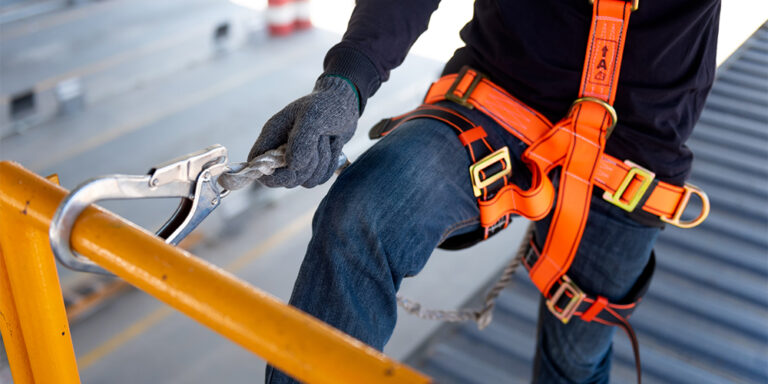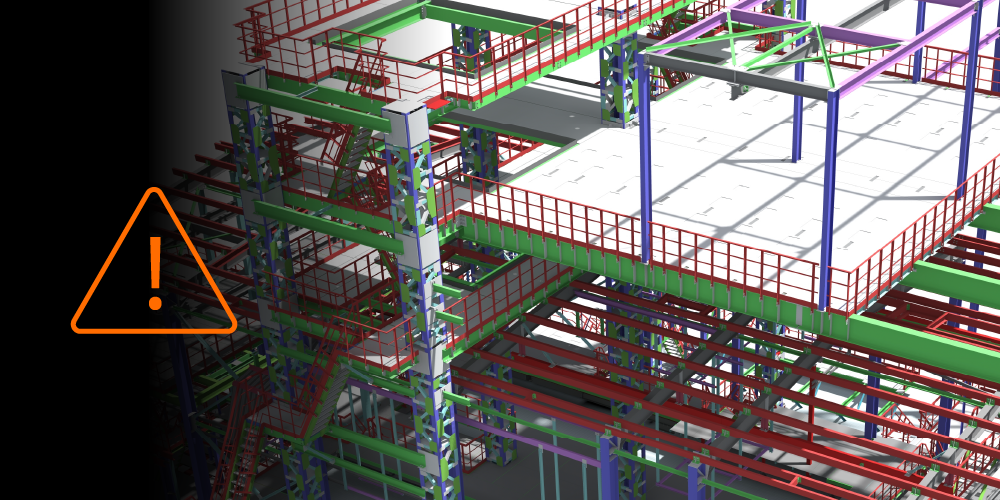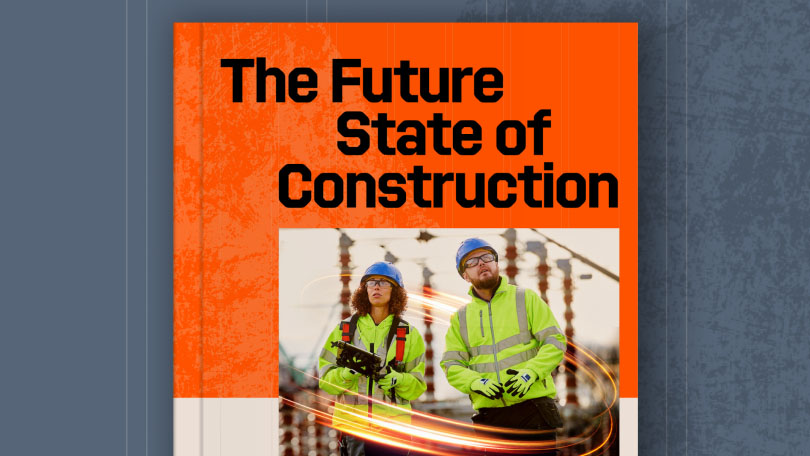Related Articles
— 9 min read
Site Safety Plan: What It Is, WHS Requirements, and How to Create One That Works

Last Updated Aug 31, 2025

Josh Krissansen
48 articles
Josh Krissansen is a freelance writer with two years of experience contributing to Procore's educational library. He specialises in transforming complex construction concepts into clear, actionable insights for professionals in the industry.
Last Updated Aug 31, 2025

For project leaders, a site safety plan is more than a compliance requirement.
It is an operational blueprint for keeping people safe, work flowing, and projects protected from costly disruption. Delivering safe, efficient outcomes today means aligning WHS obligations with on-the-ground realities, integrating hazard controls into daily workflows, and ensuring every team member knows exactly what to do when conditions change.
Construction sites in Australia remain some of the most complex and high-risk workplaces in the world. A single lapse in hazard control can halt progress, trigger regulatory action, and damage hard-earned reputations.
This article breaks down what a site safety plan should include, the legal requirements under Australia’s WHS framework, and proven strategies for developing, implementing, and updating a plan that works in real-world conditions. The goal is to help your project stay safe, compliant, and on track from day one.
Table of contents
What is a Site Safety Plan?
A site safety plan is a project-specific WHS management document that identifies hazards, defines control measures, assigns safety responsibilities, and sets emergency procedures.
Under WHS legislation, the Person Conducting a Business or Undertaking (PCBU) must have a compliant plan in place before mobilisation, integrating mandatory documents such as Safe Work Method Statements (SWMS) for high‑risk work and Job Safety Analyses (JSAs).
Each site’s unique conditions, nuances, and needs dictate the details of the plan's structure and the provisions and preventions it implements. As the project progresses through development phases, owners and managers will review and update the plan to reflect real-time, on-the-ground changes in site conditions, work activities, or risk profiles.
When implemented correctly, site safety plans reduce the likelihood of incidents, delays, and regulatory breaches. They also ensure that all stakeholders understand their safety obligations from day one.
Why a Site Safety Plan is Important in Construction
An effective site safety plan aligns WHS obligations with daily operations. It enables leaders to integrate hazard controls into workflows, verify compliance during inspections, and respond quickly when conditions change—reducing the likelihood of stop‑work orders, schedule delays, and cost overruns.
Prevent Accidents and Injuries
Site safety plans identify risks early and establish controls, responsibilities, and procedures to mitigate them. Clear expectations reduce the likelihood of incidents, stand-downs, and stop-work orders.
Support WHS Compliance
WHS legislation requires contractors to manage risks and consult workers on control measures. A site safety plan helps demonstrate compliance and due diligence. When paired with SWMS and JSAs, it strengthens the project’s risk management framework and supports audits or investigations.
Reduce Project Risk and Cost
Incidents disrupt work, delay program delivery, and increase insurance and compensation costs.
A proactive safety plan formalises inspections, defines escalation processes, and ensures critical controls are in place. Fewer incidents result in more predictable timelines and lower cost per project.
Improve Worker Confidence and Morale
When risks are clearly understood and managed, crews are more engaged and more likely to follow procedures. Higher engagement supports safer behaviours, stronger teamwork, and better on-site productivity.
Build Stakeholder Trust
Clients, insurers, and principal contractors expect more than baseline compliance. A thorough site safety plan demonstrates operational discipline, strengthens reputational standing, and can support future tender success.
Australian Health & Safety Regulations and Legal Requirements
Site safety plans are a legal and operational requirement on most Australian construction projects. They form a core part of the WHS framework and must be properly developed, implemented, and maintained to avoid regulatory, financial, and reputational risk.
When Site Safety Plans Are Required
Under WHS legislation, the Person Conducting a Business or Undertaking (PCBU) ensures a compliant site safety plan before any work begins. The plan must identify risks, define controls, and be communicated clearly to all workers.
Site managers, safety officers, and supervisors are responsible for on-site implementation. They must monitor compliance, integrate controls into daily workflows, and update the plan when site conditions change. The plan must be available in both physical and digital form, with updates distributed to all supervisors immediately
Contractors and subcontractors are required to work in accordance with the plan and prepare task-level documentation as needed. This includes Safe Work Method Statements.
Pro Tip
A site safety plan works when subcontractors treat it as part of the job, not just paperwork. Involve them in reviews so controls match site conditions and build stronger buy-in on the ground.
Work Health and Safety (WHS) Laws
Australia’s harmonised WHS laws apply across all states and territories.
These laws require PCBUs, officers, and workers to eliminate or minimise risks so far as is reasonably practicable. Legal duties include consulting workers, applying the control hierarchy, and maintaining documented safety procedures.
Codes, Standards, and Additional Obligations
Site safety plans must reflect obligations under the National Construction Code (NCC), which sets minimum safety and amenity standards. Depending on the project scope, contractors may also need to comply with Australian Standards such as AS/NZS 4801 or AS 3000 and environmental laws like the EPBC Act.
Some jurisdictions introduce further requirements. For example, New South Wales mandates additional planning documentation under the Design and Building Practitioners Act.
Failure to meet these obligations can result in delayed permits, stop-work orders, and regulatory enforcement.
Consequences of Non-Compliance
Failure to maintain a complete, accurate, and current site safety plan can trigger a range of serious consequences. Regulators may issue improvement notices, stop-work orders, or initiate prosecutions. Legal penalties vary by jurisdiction but may include substantial fines for the PCBU, project leadership, or individual workers.
Beyond regulatory action, poor safety documentation often correlates with higher incident rates. Injuries, near misses, and uncontrolled hazards disrupt site operations and increase the likelihood of program delays, insurance claims, and workers’ compensation costs.
Non-compliance can also compromise contractual relationships. Clients and principal contractors may view lapses in documentation as a breach of obligation, leading to disputes, withheld payments, or project termination.
Finally, reputational damage can be significant.
Safety performance is increasingly scrutinised during tender evaluations and prequalification processes. A history of compliance failures may limit future project opportunities and undermine confidence in the business’s ability to manage risk effectively.
What’s Covered in a Site Safety Plan
An effective site safety plan provides a clear, structured overview of how health and safety will be managed throughout the project. It must be tailored to the specific site and updated as conditions change. Core components typically include:
Project and Site Information
Include a summary of key project details, such as location, duration, scope of work, and project type. List primary contacts, including the PCBU, project manager, site supervisor, safety officer, and emergency responders.
Record any environmental conditions that may introduce site-specific risks, such as high winds, extreme heat, or flood-prone areas.
Hazard Identification and Risk Assessment
Document all foreseeable site hazards before work begins.
Each hazard must be formally assessed. Where applicable, include supporting documentation such as Job Safety Analyses (JSAs) and risk matrices to guide control selection.
Control Measures and Safety Procedures
The plan must outline how risks will be eliminated or reduced. This includes:
- References to all relevant Safe Work Method Statements
- PPE requirements for specific tasks or zones
- Equipment handling protocols and lock-out procedures
- Traffic management plans and exclusion zones
- Site access protocols, including restrictions
Control measures should follow the WHS hierarchy and comply with Australian Standards.
Emergency Response Planning
Define clear emergency procedures for fire, injury, chemical exposure, and severe weather. Include:
- Evacuation routes and muster points
- Emergency contacts and roles
- Procedures to account for all personnel
Display the plan prominently and conduct regular drills to validate preparedness.
Roles and Responsibilities
Assign specific responsibilities for the plan's development, implementation, monitoring, and review. This should include roles for PCBUs, contractors, site managers, safety officers, and workers.
Training and Induction
All workers and visitors must complete a site-specific safety induction. This must cover:
- Key hazards and control measures
- Emergency procedures
- Site-specific safety protocols and access rules
Schedule ongoing toolbox talks to address emerging risks and reinforce site priorities. Additional safety training should be provided to maintain competence and support a strong construction safety culture.
How to Develop and Implement a Site Safety Plan
A strong site safety plan must be developed before mobilisation, implemented with discipline, and treated as a live operational tool. Follow these eight steps to ensure compliance and support safe, efficient delivery.
1. Plan Before Construction Begins
Develop the plan during the pre-construction phase, before any site activity starts. Early planning allows teams to assess site-specific hazards and embed safety into the project’s methodology, staging, and sequencing.
2. Identify Project-Specific Risks and Requirements
Review project drawings, program milestones, and staging plans to identify high-risk activities. Consult with site managers, subcontractors, and safety professionals to assess likely risks, including crane lifts, excavation, work at height, or mobile plant.
Consider regional factors such as bushfire zones, extreme heat, or flood exposure.
3. Compile the Document
Structure the plan to present all required components clearly:
- Project summary, site location, and key contacts
- Hazard identification and risk assessments
- Control measures and safe work procedures
- PPE requirements and access restrictions
- Emergency procedures and contacts
- SWMS references for all high-risk construction work
- Induction and training protocols
4. Review and Approve the Plan
Collaborate with the project manager, safety officer, and client (if required) to review the draft. Larger or regulated projects may call for more formal approval before site mobilisation. Finalise version control and ensure the plan is accessible to all stakeholders.
5. Communicate the Plan and Induct Workers
Before work begins, induct all workers and visitors using the finalised plan. Inductions must cover site-specific hazards, control measures, emergency procedures, and safety expectations. Schedule regular toolbox talks to reinforce awareness and address emerging risks.
6. Monitor and Enforce Compliance
Assign responsibility to site supervisors and safety officers to oversee compliance. Conduct daily jobsite inspections, verify control measures are followed, and record observations. Use pre-starts, Take 5s, and observation checklists to drive accountability at the frontline.
7. Update the Plan as Conditions Change
Treat the plan as a live document. Review and revise it when:
- Work methods, equipment, or access points change
- New subcontractors or trades are brought on-site
- An incident, near miss, or audit identifies a gap
- Site conditions shift due to weather or staging changes
Communicate all updates clearly and confirm understanding before resuming work.
8. Use Technology to Support Implementation
Digital tools help streamline version control, distribute updates, and capture field data. Use mobile inspections, digital SWMS, and safety dashboards to track compliance, identify trends, and improve planning on future projects.
Better manage WHS obligations and reduce risk on Australian construction sites with site safety plans.
A well-developed site safety plan helps contractors meet legal requirements, control high-risk activities, and maintain safe, compliant operations throughout the project lifecycle.
When integrated into daily workflows and supported by technology, it becomes a critical tool for improving safety performance, protecting workers, and avoiding costly disruptions.
Categories:
Written by

Josh Krissansen
48 articles
Josh Krissansen is a freelance writer with two years of experience contributing to Procore's educational library. He specialises in transforming complex construction concepts into clear, actionable insights for professionals in the industry.
View profileExplore more helpful resources

Managing Direct Costs in Construction: How Visibility Drives Profitability
Direct costs define the financial reality of every construction project. They cover the labour, materials, and equipment that drive delivery and determine profitability. But even the best-planned budgets can shift...

BIM Clash Detection: Reducing Rework, Delays, and Risk in Construction
Design clashes can be a significant hidden cost in construction, as each conflict between systems risks expensive rework, project delays, and reduced margins. BIM clash detection empowers teams to identify...

Next-Gen Job-Costing: Ready to Move? 5 Things to Consider Before You Get Started
In this three-part series, Quantity Surveyor turned Financial Solutions Specialist Clint Burgess uncovers the real-world gains for people, processes, and profits when businesses move from legacy to next-generation Enterprise Resource...

From Workarounds to Workflow: Solving Construction’s Legacy Job-Costing System Challenges with Next-Gen Tools
In this three-part series, Quantity Surveyor turned Financial Solutions Specialist Clint Burgess uncovers the real-world gains for people, processes, and profits when businesses move from legacy to next-generation Enterprise Resource...
